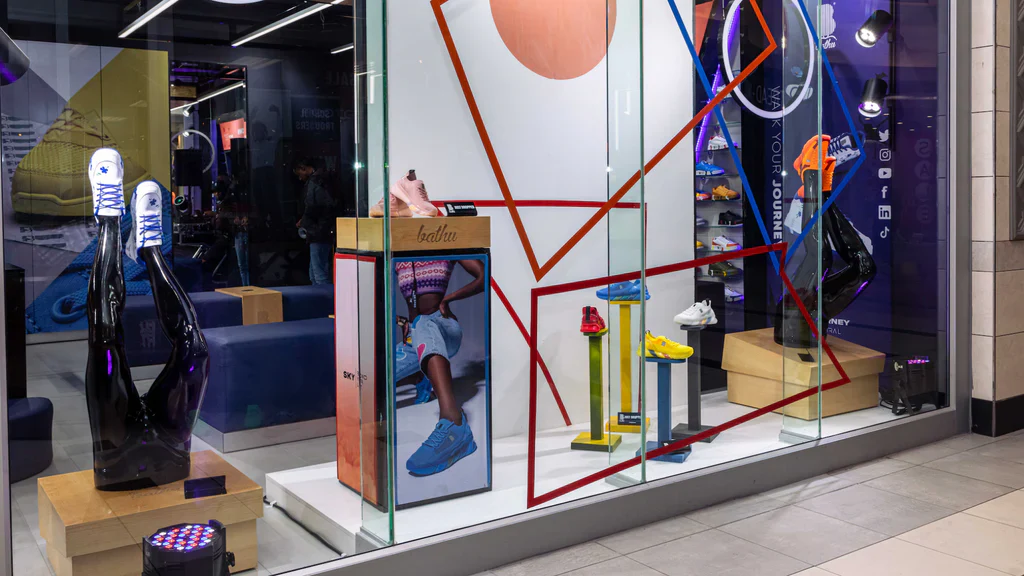Visual merchandising is a crucial aspect of retail marketing that involves creating visually appealing displays to attract customers and drive sales.
In Singapore, where the retail industry is vibrant and competitive, mastering the art of visual merchandising can significantly enhance one’s career prospects.
Short courses tailored to visual merchandising offer a convenient and focused way to gain relevant skills and knowledge in this field.
But can you learn at your own pace? Let’s delve into the world of visual merchandising short courses in Singapore to find out.
Understanding Visual Merchandising
Before delving into the specifics of short courses, it’s essential to understand what visual merchandising entails.
Visual merchandising encompasses various elements such as window displays, store layouts, signage, and product presentation.
Effective visual merchandising management not only showcases products attractively but also tells a story, evokes emotions, and influences purchasing decisions.
The Importance of Short Courses
In Singapore’s fast-paced retail industry, staying updated with the latest trends and techniques in visual merchandising is crucial.
Short courses offer a convenient way for both aspiring and experienced visual merchandisers to acquire new skills or refine existing ones.
These courses are designed to be concise, practical, and industry-relevant, making them ideal for individuals seeking to enhance their expertise without committing to long-term academic programs.
Overview of Visual Merchandising Short Courses in Singapore:
Singapore boasts a range of institutions and training providers offering visual merchandising short courses catering to diverse needs and skill levels. These courses typically cover topics such as:
- Principles of Visual Merchandising: Understanding the fundamentals of visual merchandising, including color theory, spatial design, and product placement.
- Retail Branding and Identity: Exploring how visual merchandising contributes to building and maintaining a brand’s identity and image within a retail environment.
- Window Display Design: Mastering the art of creating captivating window displays that attract attention and communicate brand messages effectively.
- Store Layout and Design: Learning how to optimize store layouts to enhance customer flow, maximize space utilization, and improve the overall shopping experience.
- Merchandise Presentation Techniques: Acquiring skills in arranging and presenting merchandise in-store to highlight key products, promote cross-selling, and stimulate impulse purchases.
- Digital Visual Merchandising: Understanding the integration of digital technologies such as interactive displays, digital signage, and augmented reality into the visual merchandising strategy.
- Visual Merchandising Trends: Staying abreast of the latest trends and innovations shaping the field of visual merchandising globally and locally.
Can You Learn at Your Own Pace?
The flexibility of learning at one’s own pace is a crucial factor for many individuals considering short courses.
Fortunately, many visual merchandising short courses in Singapore offer flexible learning options to accommodate diverse schedules and learning preferences.
- Self-Paced Online Courses
With the rise of online learning platforms, many institutions offer visual merchandising course singapore that learners can access remotely and complete at their own pace.
These courses typically provide pre-recorded lectures, interactive modules, and assignments that students can complete according to their own schedules.
- Blended Learning Formats
Some short courses combine online learning with in-person workshops or practical sessions.
This blended approach allows students to benefit from both the flexibility of online learning and the hands-on experience of face-to-face instruction.
- Modular Course Structure
Many visual merchandising short course Singapore are structured into modular units, allowing students to focus on specific topics of interest or areas where they need improvement.
This modular approach enables learners to customize their learning experience and progress at a pace that suits them best.
- Flexible Course Duration
While some visual merchandising short courses adhere to a fixed schedule, others offer flexible course durations, allowing students to complete the program within a timeframe that fits their availability and commitments.
Benefits of Learning at Your Own Pace
Learning at one’s own pace offers several advantages for individuals pursuing visual merchandising short courses in Singapore:
Flexibility and Learning Pace
One of the key advantages of short courses is their flexibility, allowing learners to study at their own pace. Many institutions offer both full-time and part-time options, enabling individuals to balance their studies with work or other commitments.
Additionally, some courses may be available in online or blended formats, providing even greater flexibility for remote learners.
While short courses provide a structured curriculum, the pace of learning is often adaptable to individual preferences. Learners can progress through the material at a comfortable speed, revisiting concepts as needed and seeking additional support from instructors or peers.
Moreover, flexible scheduling options allow students to customize their learning experience according to their availability and learning style.
Hands-On Learning and Practical Experience
An integral aspect of visual merchandising short courses is hands-on learning and practical experience. Students have the opportunity to apply theoretical concepts in real-world settings through projects, workshops, and industry placements.
These practical components not only reinforce learning but also enable students to develop valuable skills such as creative problem-solving, teamwork, and attention to detail.
Many courses incorporate field trips to retail outlets, exhibitions, or design studios, providing firsthand exposure to diverse merchandising environments and trends.
Such immersive experiences deepen students’ understanding of the industry and foster networking opportunities with industry professionals.
Support and Resources
Despite the self-paced nature of short courses, learners receive ample support from instructors, mentors, and support staff.
Instructors are often industry practitioners with extensive experience, offering valuable insights and guidance to students.
Additionally, educational institutions provide access to resources such as libraries, online databases, and specialized software to facilitate learning and research.
Furthermore, many courses offer career guidance and placement services to assist students in transitioning into the workforce upon completion of their studies. These services may include resume writing workshops, mock interviews, and networking events with potential employers.
Conclusion
Visual merchandising short courses in Singapore offer valuable opportunities for individuals seeking to pursue a career in retail marketing or enhance their existing skills in this field.
With the flexibility of learning at one’s own pace, these courses cater to the diverse needs and preferences of learners, empowering them to acquire new knowledge and expertise at their convenience.
Whether you’re a novice exploring the fundamentals of visual merchandising or a seasoned professional looking to stay ahead of industry trends, there’s a short course in Singapore waiting for you to embark on your learning journey.




